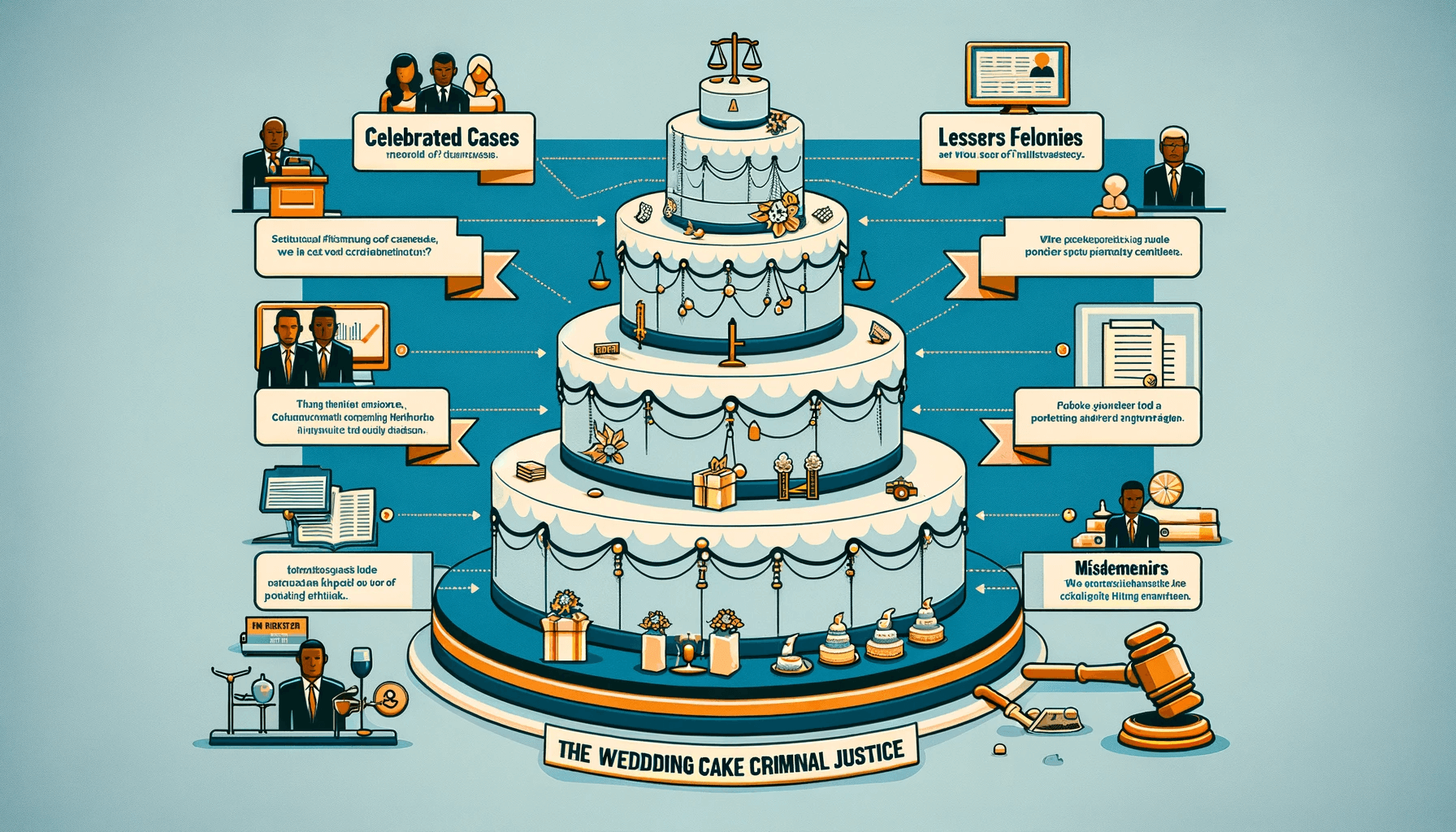The criminal justice system is a complex network where cases are not treated equally. This inequality is aptly represented through the “Wedding Cake Model of Criminal Justice,” a concept introduced by Samuel Walker in the 1980s. As intricate as the multi-tiered cake itself, this model illustrates how cases are categorized and prioritized in the criminal justice system.
What is the Wedding Cake Model?
The Wedding Cake Model simplifies the criminal justice process into four distinct tiers, mirroring the layers of a traditional wedding cake. Each layer represents a different type of case, sorted by its severity, the public profile of the defendants, and the amount of media attention it receives.
- Top Layer – Celebrated Cases: The smallest layer at the top represents high-profile cases. These cases typically involve celebrities or public figures and receive extensive media coverage. Examples include cases like OJ Simpson’s trial or the Watergate scandal. They are the focus of public attention and often influence legal precedents.
- Serious Felonies: The second and third layers encompass serious felonies – significant crimes often involving violence, such as manslaughter, robbery, and hate crimes. Though less publicized than the top layer, these cases involve serious legal consequences and often result in substantial jail time.
- Lesser Felonies and Misdemeanors: The largest and bottom layer includes a vast number of minor offenses like misdemeanors and lesser felonies. These are the most common cases in the criminal justice system, often resolved with lesser sentences and receiving minimal media attention.
Media Influence and Public Perception
The model stresses the impact of media and public perception on the criminal justice process. High-profile cases at the top garner more attention, thereby affecting how these cases are treated and perceived legally and publicly.
Practical Implications
For legal professionals and law enforcement officers, the model is a tool to understand case prioritization and processing. It sets realistic expectations for case handling and highlights the varied nature of work in the criminal justice field.
The Concept of Assembly Line Justice
At the lower levels of the model, the concept of “assembly line justice” comes into play. Here, the criminal justice system is geared towards processing a high volume of cases efficiently, often through streamlined procedures.
The Wedding Cake Model’s Relevance
The Wedding Cake Model of Criminal Justice is crucial in explaining the discrepancies in the treatment of cases. It sheds light on why some cases gain national attention and others pass through the system quietly. For students and professionals in criminal justice, understanding this model is vital in grasping the real-world workings of the system.
Conclusion
Samuel Walker’s Wedding Cake Model offers a simplified yet profound perspective on the criminal justice system. It’s a critical tool for understanding how different cases navigate through the system, influenced by factors like media attention and public opinion. This model is not just a theoretical construct but a practical guide for anyone involved in or interested in the workings of criminal justice.









Leave a Reply